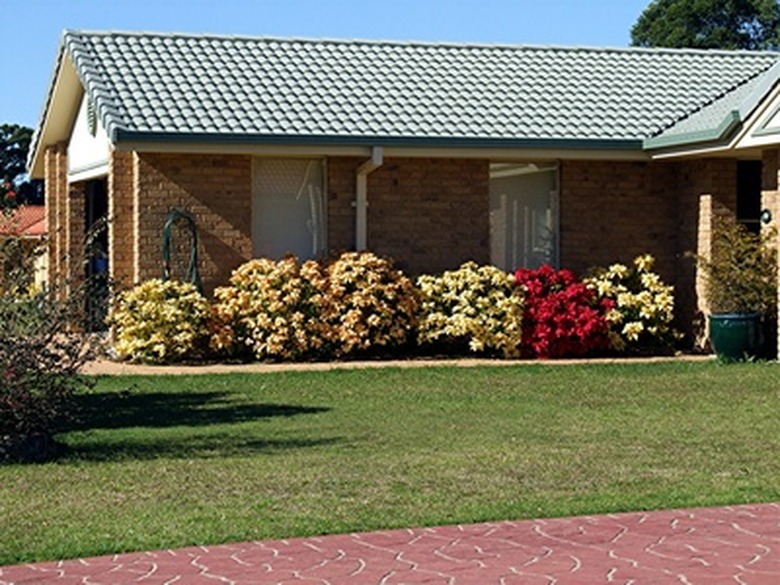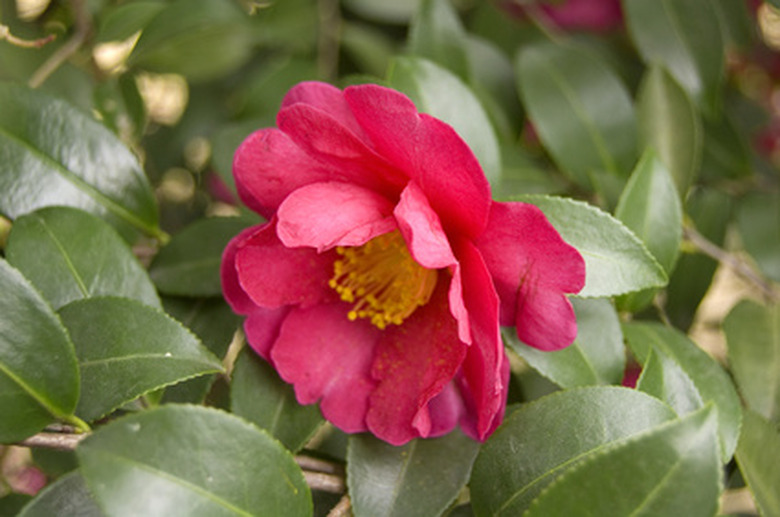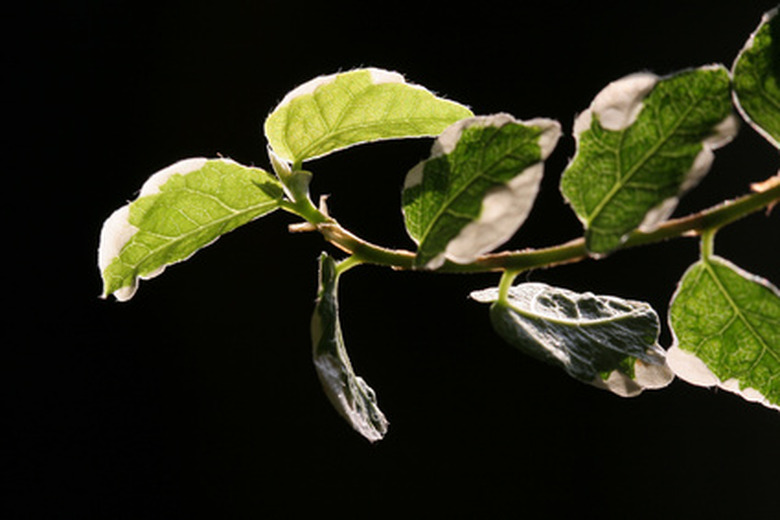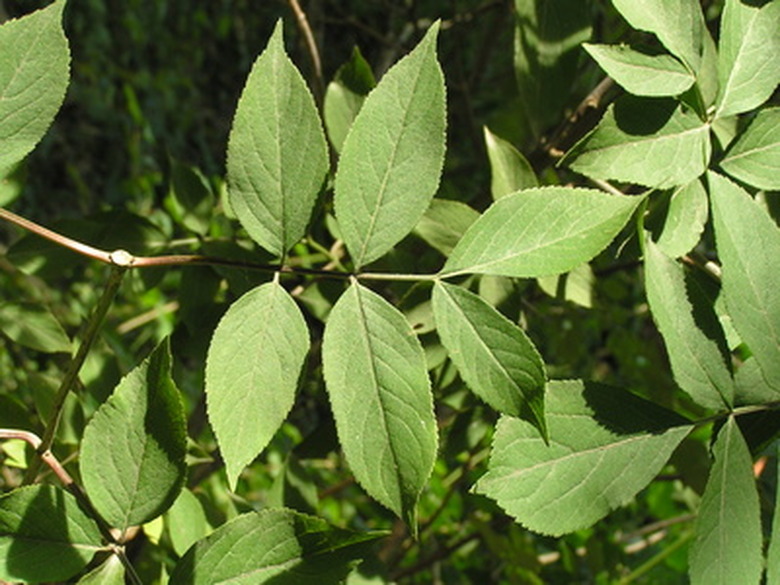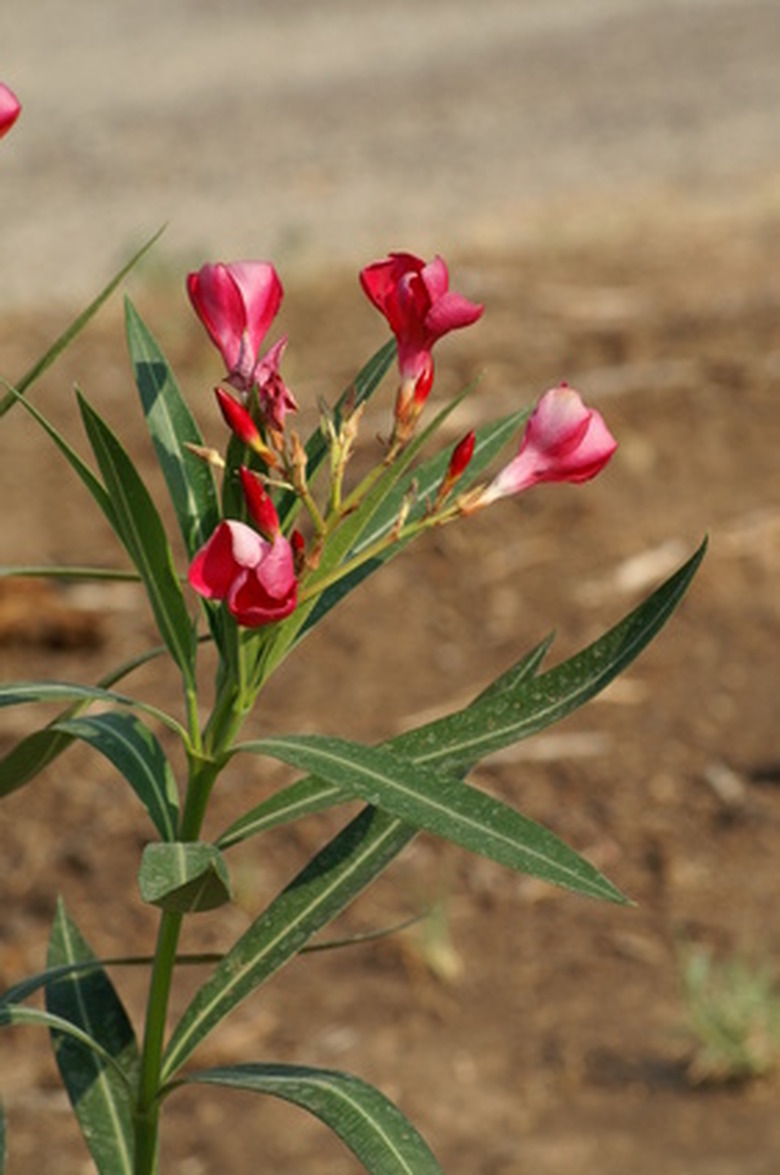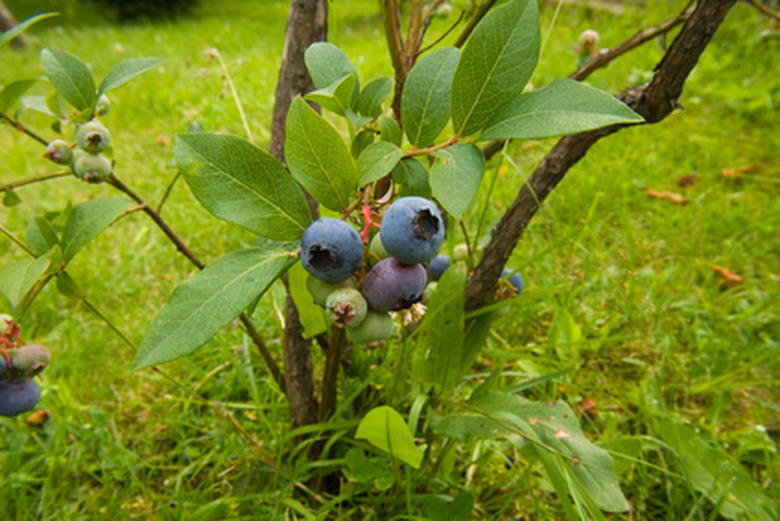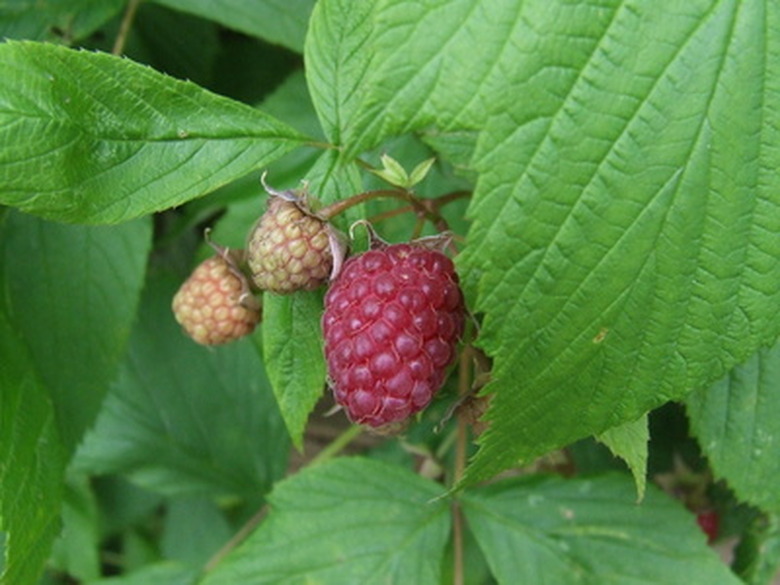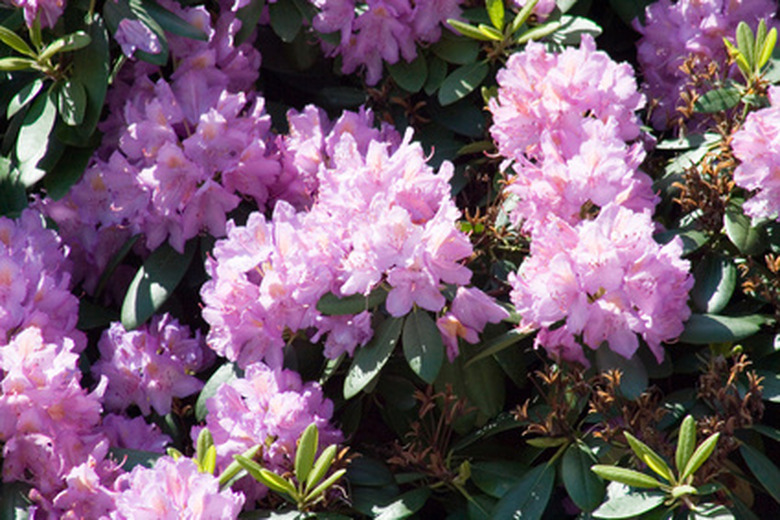How To Identify A Flowering Shrub
Flowering shrubs are usually broadleaf plants found in a wide range of climates and regions. Even while the flowering shrub is in bloom, identifying the shrub species can be difficult. You'll need to study several different characteristics of the flowering shrub–not just the blooms–before you can make an accurate identification. If you suspect the flowering shrub is native to your area, you can reference a plant field guidebook from your local agricultural extension office.
Step 1
Identify the flowering shrub by its overall size. For instance, the chokeberry (Prunus virginiana) can reach a height of 30 feet and a width of 20 feet, while the dwarf willow shrub (Salix cottetii) grows to only 6 feet tall and wide. The Siberian peashrub (Caragana arborescens) grows to 20 feet tall and 15 feet wide, while the skunkbush sumac (Rhus trilobata) reaches a height and width of only 5 to 6 feet.
- Flowering shrubs are usually broadleaf plants found in a wide range of climates and regions.
- You'll need to study several different characteristics of the flowering shrub–not just the blooms–before you can make an accurate identification.
Step 2
Study the flowers to identify the shrub including the flower sizes, colors and time of blooming. The beautyberry shrub (Callicarpa spp.) has clusters of small white flowers in the spring, camellias have larger flowers in shades of red, pink and white, the red flowering currant (Ribes sanguineum) has clusters of red flowers, and mountain heather shrubs (Phyllodoce spp.) have strings of tiny, bell-shaped, pink, purple, blue or yellow blossoms.
Step 3
Look at the way leaves are arranged on the stems or branches to identify the flowering shrub. The leaves can alternate in a staggered fashion along the stem or oppositely arrange in pairs directly across from one other. For example, the silver buffaloberry (Shepherdia argentea) and redosier dogwood (Cornus stolonifera) have oppositely arranged leaves, while the hazelnut (Corylus spp.) and deciduous holly (Ilex decidua) shrubs have alternately arranged leaves.
- Study the flowers to identify the shrub including the flower sizes, colors and time of blooming.
- has clusters of small white flowers in the spring, camellias have larger flowers in shades of red, pink and white, the red flowering currant (Ribes sanguineum) has clusters of red flowers, and mountain heather shrubs (Phyllodoce spp.)
Step 4
Study the shrub leaves to determine whether they are compound or simple. Simple leaves grow singularly from the bud, while compound leaves are comprised of multiple leaflets. The American elderberry (Sambucus canadensis) has compound leaves with five to seven leaflets, and the bush-type rose (Rosa spp.) has compound leaves with three to seven leaflets. The Armur honeysuckle (Lonicera maackii) and desert willow (Chilopsis linearis) have simple leaves.
Step 5
Identify the flowering shrub by studying its leaf shape, such as whether the leaves are oblong, oval, rounded, spear-shaped, heart-shaped, arrowhead-shaped, spatula-shaped, triangular or elliptical. The rainbow plum shrub (Prunus sp.) has spear-shaped leaves, while the oleander (Nerium oleander) has narrow, slightly elliptical leaves.
- Study the shrub leaves to determine whether they are compound or simple.
- The Armur honeysuckle (Lonicera maackii) and desert willow (Chilopsis linearis) have simple leaves.
Step 6
Look at the leaf edges or "margins" to identify the flowering shrub, such as whether the edges are smooth, serrated, doubly serrated, coarsely toothed or finely toothed. Also look at whether the leaves are lobed, either deeply or shallowly. The evergreen huckleberry shrub (Vaccinium ovatum) has leaves with toothed edges, while the red huckleberry (V. parvifolium) has smooth leaf edges. The Nootka rose (Rosa nutkana) has compound leaves with toothed leaflets, and the Italian buckthorn (Rhamus alaternus) has serrated leaves. The Pacific nine bark shrub (Physocarpus capitatus) has leaves with three to five deep lobes.
Step 7
Identify the flowering shrub by whether its leaves and stems are covered in hairs or are rough-textured. The Nanking cherry (Prunus tomentosa) has hairy stems and dense, hairy undersides to its leaves, the hedge cotoneaster (Cotoneaster lucida) has hairy but shiny leaves, and the Amur privet (Ligustrum amurense) has densely hairy twigs and leaves that are hairy on the undersides along the midrib or central leaf vein.
- Look at the leaf edges or "margins" to identify the flowering shrub, such as whether the edges are smooth, serrated, doubly serrated, coarsely toothed or finely toothed.
- The Nanking cherry (Prunus tomentosa) has hairy stems and dense, hairy undersides to its leaves, the hedge cotoneaster (Cotoneaster lucida) has hairy but shiny leaves, and the Amur privet (Ligustrum amurense) has densely hairy twigs and leaves that are hairy on the undersides along the midrib or central leaf vein.
Step 8
Study any fruits to identify the flowering shrub, such as whether the fruits are nut-like, seed pods or legumes or have capsules with many seeds that split open. Determine whether they are single-seeded and not splitting open, samara or seeds with "wings," berries, drupes or fruits with three layers including a hard inner pit, pomes or fleshy fruits with small inner seeds, or multiple or aggregate fruit clusters. For example, lilacs and rhododendrons have capsule fruits with multiple seeds that split open when they mature, while rose bushes and sweetshrubs (Calycanthus) have single-seeded fruits that do not split open. Blueberry and cranberry shrubs (Vaccinium) have berry fruits, while raspberry bushes have aggregates of drupes.
Step 9
Notice whether the flowering shrub's leaves are evergreen or deciduous. Most flowering shrubs have leaves that drop in the fall and winter, but a few are evergreen and keep their leaves, such as the rhododendron, azalea, salal (Gaultheria shallon) and oleander.
Tip
Other common flowering shrubs with compound leave include the bristly locust (Robinia hispida), the skunkbush sumac with three leaflets, the flame leaf sumac (Rhus copallina) with nine to 21 leaflets, the Siberian peashrub with eight to 12 leaflets, and the hardy orange shrub (Poncirus trifoliata) with three leaflets. The rhododendron, hydrangea, forsythia, lilac and mapleleaf viburnum (Viburnum acerifolium) have simple leaves.
Warning
Don't mistake the redosier dogwood for the gray dogwood (Cornus racemosa), both of which have oppositely arranged, smooth-edged leaves and produce white berries. The gray dogwood is slightly smaller than the redosier dogwood, growing to only 8 feet tall and 5 feet wide. Also, the gray dogwood has light-brown twigs and reddish stems, while the redosier dogwood has twigs that turn red in the winter.
